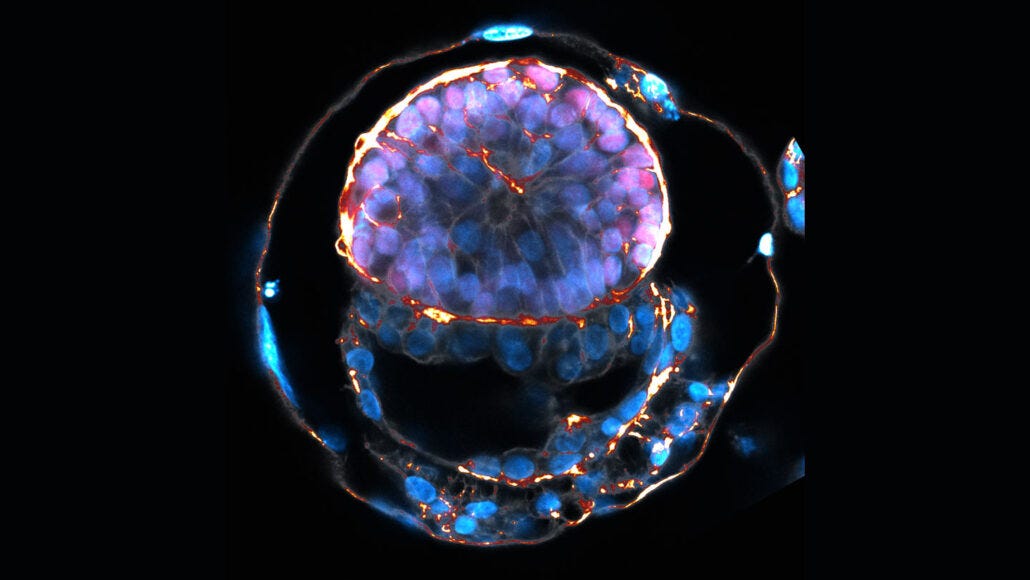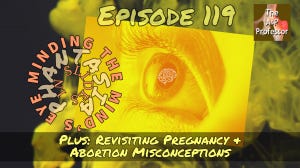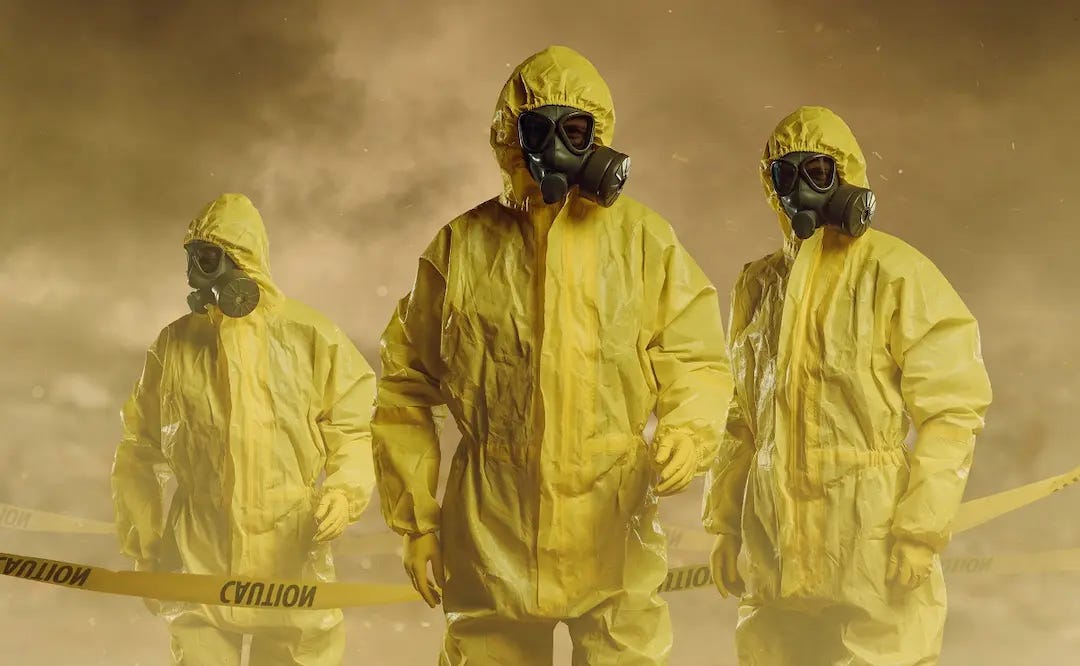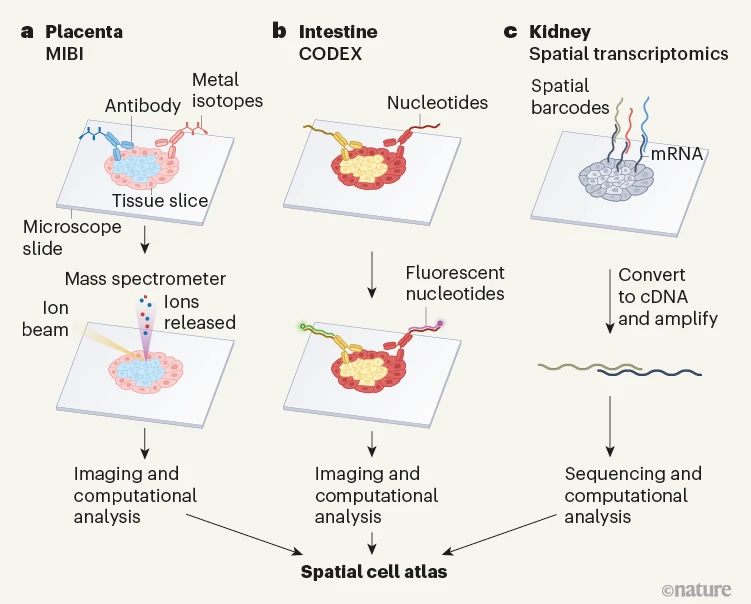Sci-Ed Update 280
Gene therapy eye drops, how we think, aphasia/aphantasia, artificial embryos, hungry feelings fight aging, anthrax patients escape, human cell atlases, and more!
Millions could benefit as teen's restored sight proves effectiveness of gene therapy eyedrops
The family came to the U.S. from Cuba in 2012 on a special visa allowing Antonio to get treatment for his condition, which affects around 3,000 people worldwide. He had surgeries to remove scar tissue from his eyes, but it grew back. Antonio's vision kept getting worse, eventually deteriorating so much that he didn't feel safe walking around.
Sabater had no answers then, and tried to reassure the boy: "I'll find a solution. I just need some time. I’m working on it.”
After two years, which included testing the drug in mice, the team got “compassionate use” approval from the U.S. Food and Drug Administration and permission from university and hospital review boards. Last August, Antonio had surgery on his right eye, after which Sabater started treating him with the eyedrops.
Krishnan said they were cautious, frequently watching to see that it was safe.
Antonio's eye recovered from the surgery, the scarring didn't return and there was significant improvement each month, Sabater said. Doctors recently measured the vision in Antoni's right eye at a near-perfect 20/25.
Read more→ AandP.info/v3v
Feeling Hungry? It Might Just Slow Aging

Summary: The sensation of hunger itself may slow aging. Researchers discovered that flies induced to feel hungry, either through diet or brain stimulation, lived longer.
They also found that hunger prompts changes in the brain’s epigenome, affecting gene expression and consequently, feeding behavior and aging.
While the researchers caution that these findings should not be directly applied to humans, they believe that similar mechanisms could modulate hunger drives in other species.
Key Facts:
The feeling of hunger itself might contribute to slower aging, according to a study from the University of Michigan.
This study demonstrated that flies induced to feel hungry, either by dietary changes or by stimulating specific neurons in the brain, lived significantly longer.
The research also identified that hunger prompts changes in the brain’s epigenome, which in turn affects gene expression, feeding behavior, and the aging process.
Read more→ AandP.info/n27
Revealed: What your thoughts look like and how they compare to others’
Thinking about thinking is hard. Sure, you may have heard of inner voice and inner vision: there was that buzz about people who don’t have any internal monologue, and huge interest in aphantasia, the phenomenon where people have no mind’s eye. But there is more to inner experience than that. What about sensations and emotions and abstract ideas? How do these all mesh together to create thoughts? Why do certain things pop into our minds? And what makes someone prone to ruminations or anxiety?
The first surprise was that people really struggle to introspect, so much so that beeper studies tend to ignore the first day’s data as it is too unreliable. Even defining a “thought” is tricky. We assume we are all talking about the same thing – a conscious mental state – but, in fact, everyone has their own ideas, says Hurlburt. What his method reveals is that our thoughts seem to include five common phenomena: inner speech, inner seeing, feelings or emotions, sensory awareness (such as the sensation of your shoe rubbing) and unsymbolised thinking (explicit thoughts that don’t include the experience of words, images or symbols).
The second surprise was that we are poor judges of what is going on inside our own heads. Beeper studies are time-consuming, so self-report questionnaires asking people how they think are more common. Comparing these two approaches reveals shocking discrepancies. Research suggests that we massively overestimate the amount of thinking we do in all five main phenomena, with the results of self-report questionnaires being between two and four times higher than those of descriptive experience sampling. So, while I conceive of myself as almost always thinking with pictures, it is likely that only around a quarter of my inner experiences contain them.
Read more→ AandP.info/fks
Minding the Mind’s Eye in Slides | Feedback on Abortion Misconceptions
Mental imagery—the mind’s eye—is not experienced by everyone in the same way. For some, it’s vivid and detailed and for others, it may not be there as a picture at all. It’s a spectrum of abilities among humans, apparently. Phantasia is another name for this ability.
To listen to this episode, click on the player (if present) or this link→ theAPprofessor.org/podcast-episode-119.html
Mindi Fried on Teaching & Learning with Aphantasia
In Episode 133, Dr. Mindi Fried joins us to discuss her experience of aphantasia, the inability to picture thoughts and memories in the mind’s eye, and how that affects how she teaches and learns anatomy and physiology. This is a chat that will increase our awareness of the huge and sometimes invisible diversity that exists among our students.
To listen to this episode, click on the player (if present) or this link→ theAPprofessor.org/podcast-episode-133.html
Russia Says Patients Infected With Deadly Bacteria Have Escaped
It sounds like the plot of an infectious disease thriller: on the arid plains of Siberia, a dinner party partakes of horse meat that secretly harbors a rare and deadly bacteria. Once guests start showing signs of an infection, they are sent to the hospital, but some escape their sick beds — panicking local officials who send out an alert.
That's how it allegedly went down in Tuva, a republic in Russia's southern Siberian region in late June, and the bacteria that made everybody sick is anthrax, according to TASS, a Russian state-run news agency.
Russian state media is known for publishing slanted news and propaganda, but it's unclear what authorities would have to gain from airing this story of a bungled public health menace. And there have been independently recorded cases of anthrax in the Russian hinterlands, such as a 2016 outbreak in the country's obscure Yamal Peninsula in northern Siberia, where scores of people became sick and a child died, according to an NPR report at the time.
Perhaps most pertinently, researchers have said that anthrax outbreaks like in 2016 will become more common due to the rapidly warming temperatures in Siberia driven by climate change. Scientists theorize that increased temperatures are thawing permafrost and are unlocking all sorts of deadly bacteria and viruses from their icy prisons.
Read more→ AandP.info/2ek
Cell ‘atlases’ offer unprecedented view of placenta, intestines and kidneys

Detailed maps of the cells in human organs show how the placenta commandeers the maternal blood supply, how kidney cells transition from healthy to diseased states and how cells in the intestine organize themselves into distinct neighbourhoods.
These atlases, published on 19 July in Nature1–3, are examples of a powerful and increasingly popular approach to studying the organs of the body in both health and disease. Each comprises hundreds of thousands of data points about gene activity and protein production in individual cells, which are then mapped to their specific location in the organ.
The hope is that the atlases will eventually yield clues about how to diagnose and treat disorders that can arise when those cells become injured or dysfunctional. “These cells organize themselves into neighbourhoods, towns, countries,” says Michael Snyder, a geneticist at Stanford University in California and an author of the study looking at the intestine3. “And it affects their function.”
Read more→ AandP.info/ky5
Cell-level reference maps for the human body take shape
The trillions of cells of the human body must be arranged in precise patterns for tissues and organs to function properly. The HuBMAP initiative1 aims to generate the technology and resources needed for researchers to map how cell types are arranged throughout the body, as well as producing its own maps of several organs. In doing so, HuBMAP should provide researchers with tools to better study the complexities of human tissue organization in health and disease. Three papers in this issue mark a key step for the initiative, describing reference cell atlases for the human placenta2, intestine3 and kidney4.
Read more→ AandP.info/37q
Human embryo replicas have gotten more complex. Here’s what you need to know

Some newly reported clumps of cells growing in lab dishes have been hailed as the closest things to human embryos that scientists have ever made in the lab.
Six studies reported in June and July describe the embryo models, which have generated excitement and concern in equal measure.
For researchers working on these embryo models, the faux embryos are new tools to gain insight into the “black box” of human development, after embryos implant in the uterus. They are useful because donated human embryos are in short supply, and there are limits on the types of experiments researchers can perform on them.
[Questions answered in the full article]
How did the latest buzz about embryo models start?
How were other embryo models made?
Are any of the embryo models major advances?
Can these embryo models result in babies?
Conversations with the public about what the embryo models represent scientifically, philosophically and legally, and about how to use them ethically need to start now, Hasson says. “We need to think about them now because it’s not the case, and it shouldn’t be the case, that the technical limits of what scientists can currently do with these models should define the ethical discussion and what the ethical limits should be.”
Read more→ AandP.info/bjm







